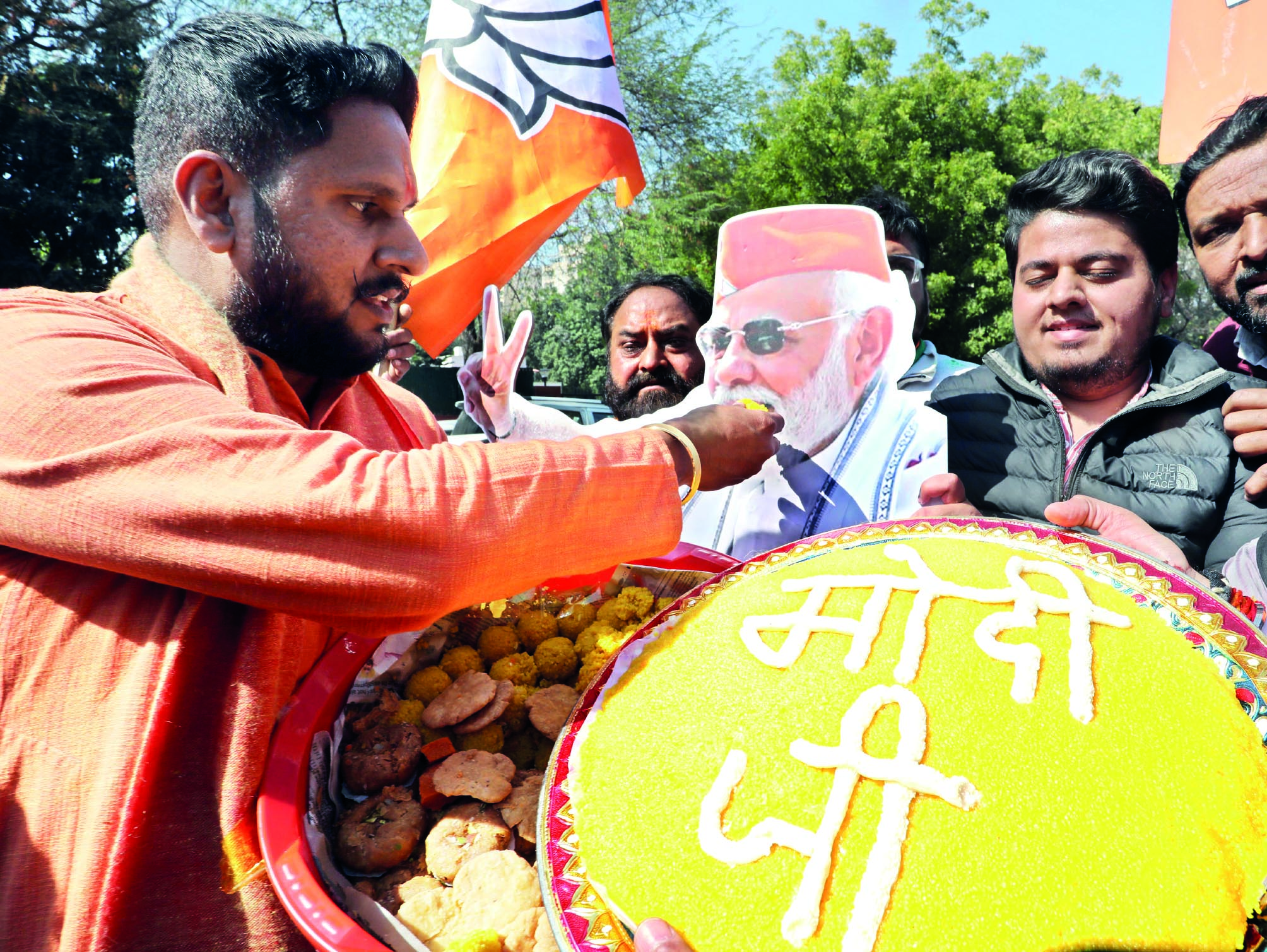
NEW DELHI, Feb. 9 -- The Bharatiya Janata Party (BJP) has achieved a notable victory in the 2025 Delhi Assembly Elections, winning 48 of the 70 seats and making significant strides among the Dalit community. The party wrested control of six out of the 16 seats where the Scheduled Caste (SC) population is prominent, marking a historic shift in its outreach to Dalit voters. According to the 2011 census, Dalits represent 16.5 per cent of Delhi's population, making them the second-largest voting bloc after the upper castes.
Traditionally, Dalit voters in Delhi have leaned toward the Congress Party (1993-2008) and later the Aam Aadmi Party (AAP) from 2013 to 2020. Even during BJP's win in 1993, the party struggled to capture Dalit-majority constituencies like Sultanpur Majra, Mangolpuri, Trilokpuri, and Ambedkar Nagar. However, this election saw several prominent Dalit leaders from both AAP and Congress face a setback.
For instance, AAP's Rakhi Birla, the sitting MLA from Mangolpuri, lost to BJP's Kailash Gangwal in the Madipur constituency by nearly 10,900 votes. Senior Congress leader Rajesh Lilothia also faced defeat in Seema Puri, finishing in third place. In contrast, BJP's Dushyant Gautam was defeated in Karol Bagh by AAP's Vishesh Ravi.
In terms of Dalit representation, there are 12 reserved seats in the Delhi Assembly, and while AAP won all of these in the 2020 elections, the BJP has now claimed four of these, with over 25 per cent Dalit population in three of them. Additionally, BJP has secured two more seats-Rajinder Nagar and Wazirpur-both with a significant Dalit population of over 20 per cent.
This is the first time BJP has successfully gained support among Dalit voters at the Assembly level, a feat previously seen in the party's Lok Sabha victories. The party's success may be attributed to the shifting dynamics within the Dalit community, particularly the divide between the Jatav/Chamar Dalits (who are better off in terms of education and employment) and other smaller SC communities.
In Delhi, areas with higher Chamar populations, such as Mangolpuri, Bawana, and Wazirpur in North West Delhi, have contributed to BJP's gains. Similarly, Madipur in West Delhi, where the Chamar population is dominant, also saw BJP's success. The only exception was Rajinder Nagar in New Delhi, where the Balmiki population outnumbers the Chamar population.
Meanwhile, Mayawati's Bahujan Samaj Party (BSP) saw a decline in its vote share, dropping from 0.7 per cent in 2020 to 0.58 per cent in 2025.
Published by HT Digital Content Services with permission from Millennium Post.
